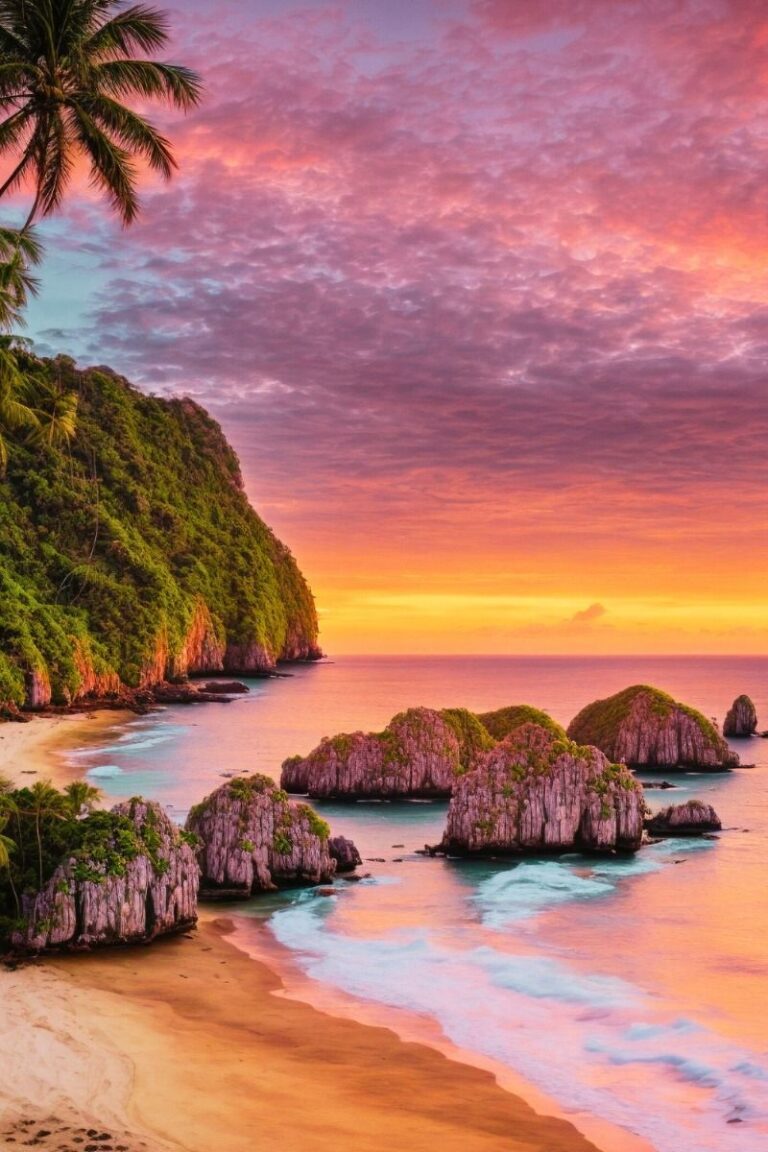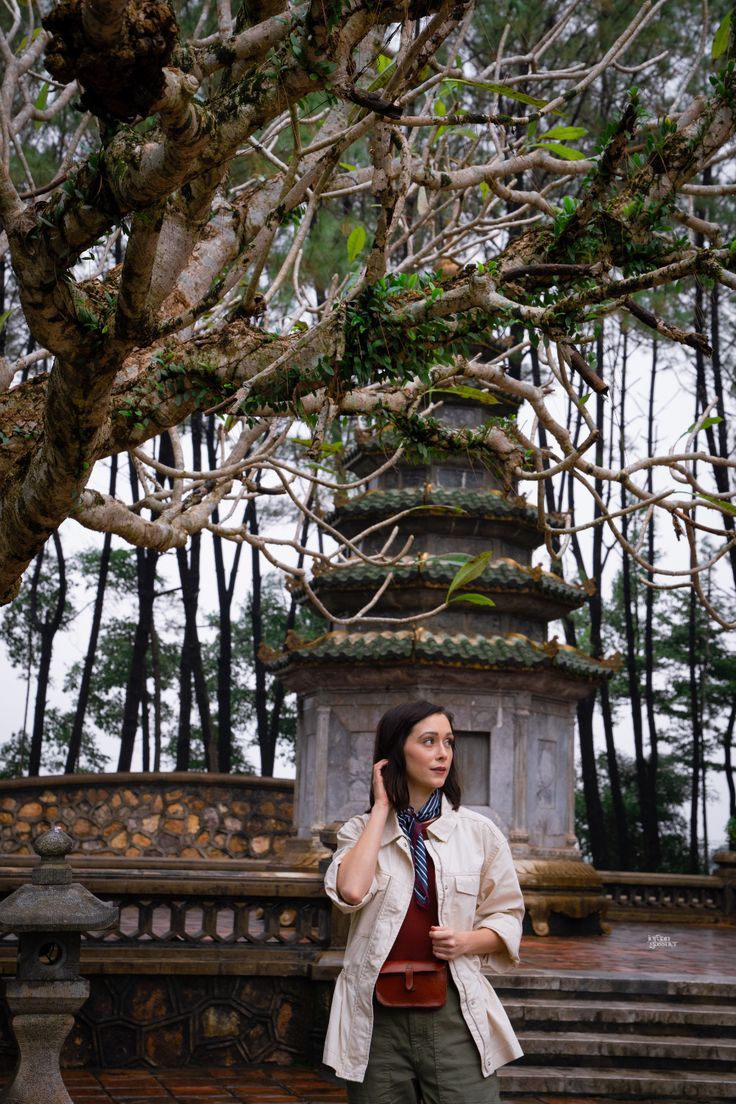5 Best Things To Do in Vietnam 2025 (Not to be Missed)
5 Best Things To Do in Vietnam 2025 (Not to be Missed)
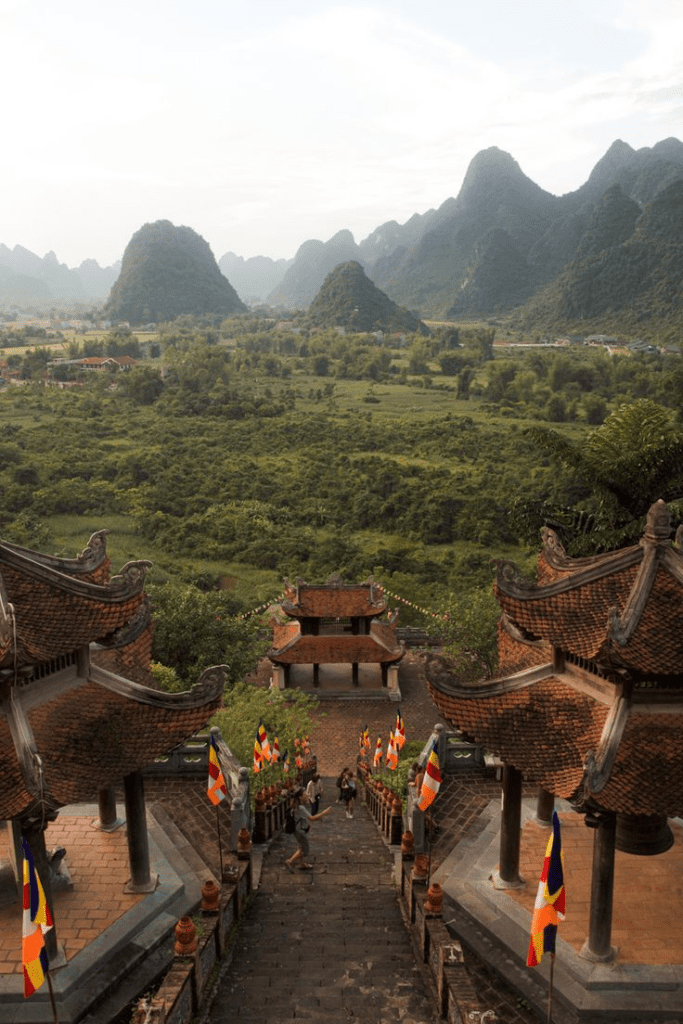
Hey there, funky fresh travelers! It’s your main man Eric here, ready to whisk you away on another epic adventure. Today, we’re diving headfirst into a country that’s stolen a massive chunk of my heart: Vietnam! If you’re looking for the best things to do in Vietnam, you’ve landed on the right blog post. Trust me, I’ve practically lived and breathed this place, from the bustling Ho Chi Minh City to the serene rice fields of the north, and I’m spilling all my secrets. Get ready for some serious wanderlust, because Vietnam is an absolute gem in Southeast Asia.
I remember my very first Vietnam trip. It was a whirlwind of new sights, sounds, and incredible flavors. I’d heard all the hype, seen all the pictures, but nothing truly prepares you for the vibrant energy and genuine warmth of this country. It’s a place that gets under your skin in the best possible way. So, buckle up, because I’m about to give you my top 15 best things to see and do in Vietnam, based on countless visits and unforgettable experiences.
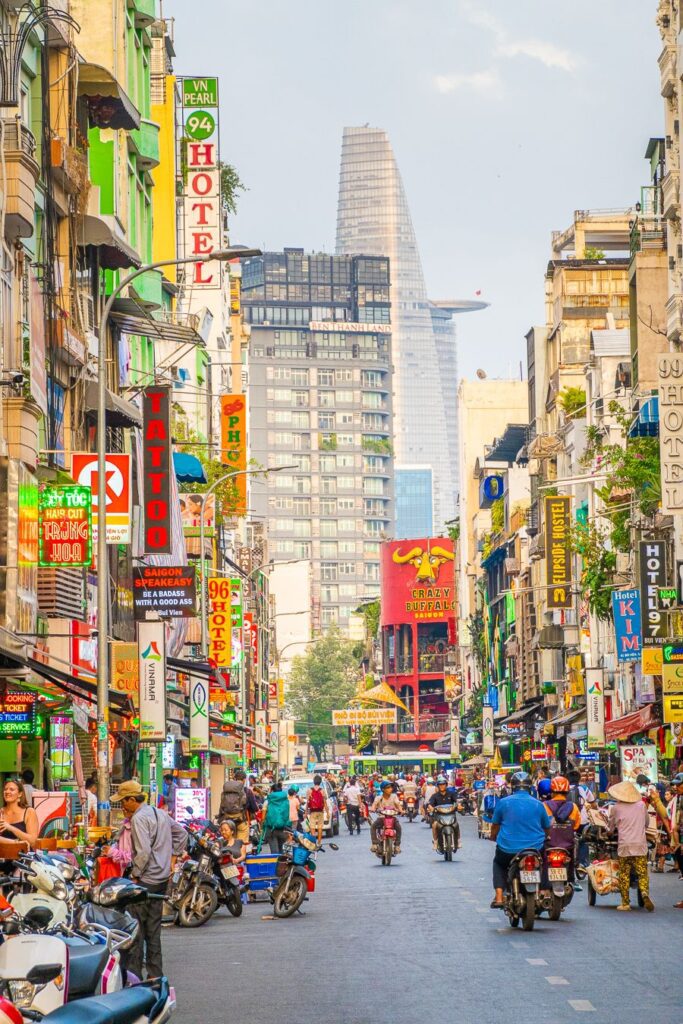
1. Explore the Buzzing Streets Vietnam of Ho Chi Minh City
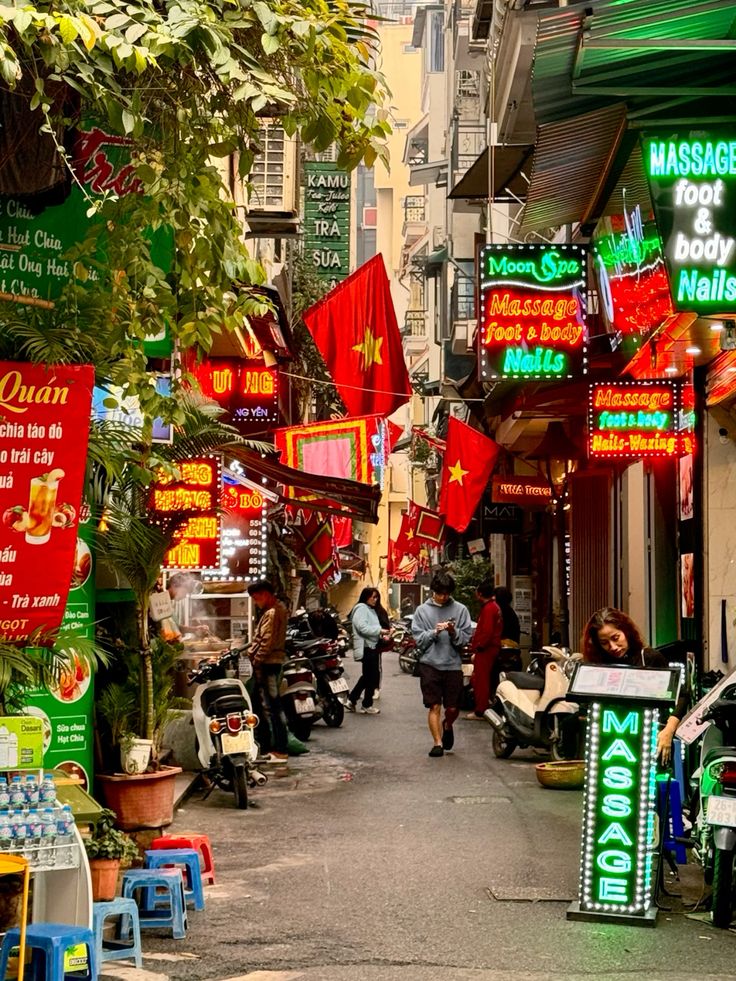
Let’s kick things off in the vibrant South, specifically Ho Chi Minh City, formerly Saigon. This isn’t just the largest city in Vietnam; it’s a pulsating hub of energy, history, and incredible street food. My first time here, I was immediately swept up in the whirlwind of motorbikes and the fragrant aromas drifting from every street corner. The sheer energy is intoxicating! It’s a must-visit destination for anyone arriving in South Vietnam. You’ll find a blend of colonial architecture and modern skyscrapers, giving it a truly unique character. Wandering through District 1, soaking in the atmosphere, is a great way to start your Vietnamese adventure.
Check our full article about Ho Chi Minh City
2. Delve into Vietnam History at the Cu Chi Tunnels
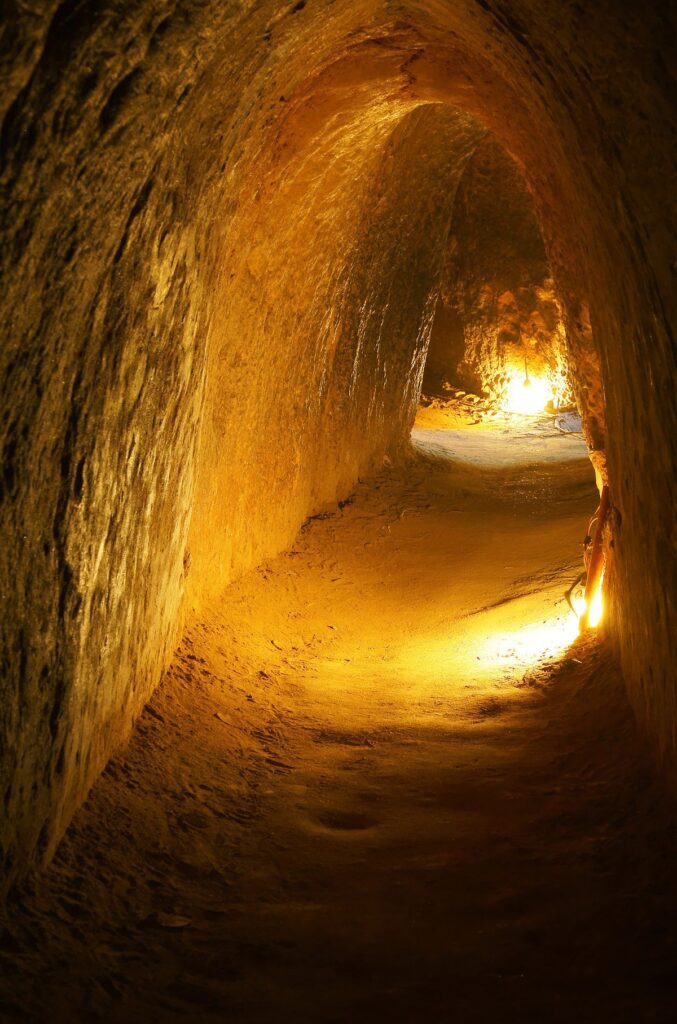
And speaking of history, you absolutely cannot miss the Cu Chi Tunnels. These incredible underground tunnels were dug by the Viet Cong during the Vietnam War, or the American War as it’s known locally, and served as a complex network for communication, supplies, and even living quarters. Crawling through them (if you dare, it’s a tight squeeze!) is a unique experience that gives you a profound appreciation for the resilience and ingenuity of the Vietnamese people. It’s a truly humbling experience, and one of the best ways to understand the strategic brilliance employed during the conflict. A local guide here is essential to fully grasp the significance of these historical sites.
3. Reflect at the War Remnants Museum
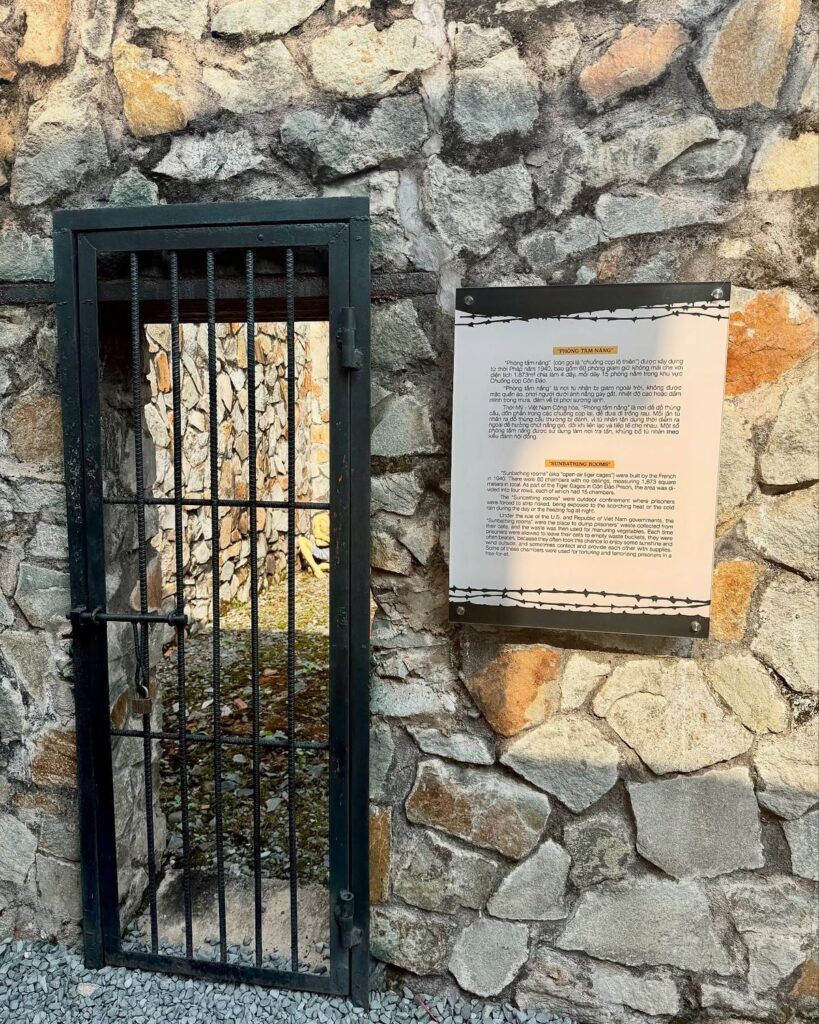
For a deeper, albeit sobering, dive into the Vietnam War, the War Remnants Museum in Ho Chi Minh City is a powerful experience that every visitor should undertake. It offers a raw and unflinching look at the conflict and the profound impact it had on the Vietnamese people. Prepare to be moved. It’s not easy, but it’s an important part of understanding modern Vietnamese history and culture. This museum provides invaluable context to the resilience of the Vietnamese spirit.
4. Navigate the Mystical Mekong Delta
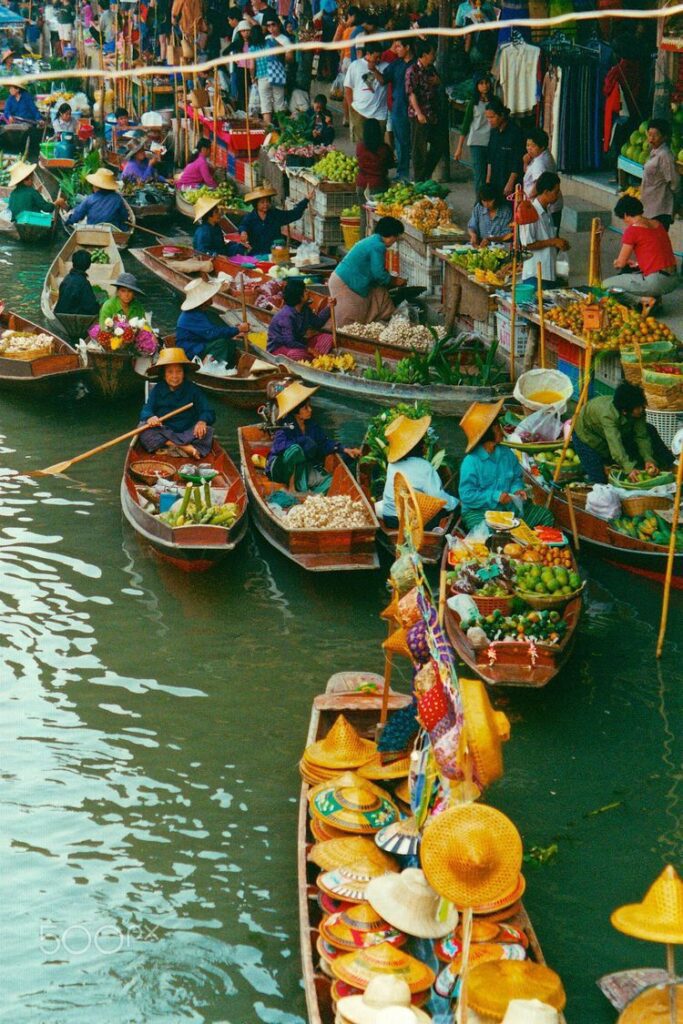
From the urban intensity, let’s switch gears to something a little more chill, but no less fascinating: the Mekong Delta. This verdant labyrinth of waterways, rice paddies, and fishing villages is the “rice bowl” of Vietnam. A boat trip here is a great way to witness the slower way of life in the rural areas. I’ve spent days exploring the Mekong River, visiting floating markets, sampling fresh fruit from local orchards, and even trying my hand at making coconut candy. It’s a truly authentic glimpse into Vietnamese culture and a delightful contrast to the urban buzz of Ho Chi Minh City. The best time to visit is during the dry season to avoid heavy rains, but honestly, any time is a good time to experience the magic of the Delta. You’ll see endless rice fields stretching to the horizon.
Mekong Delta Itinerary in 5 days
Day 1: Arrival in mỹ tho bến tre Exploration
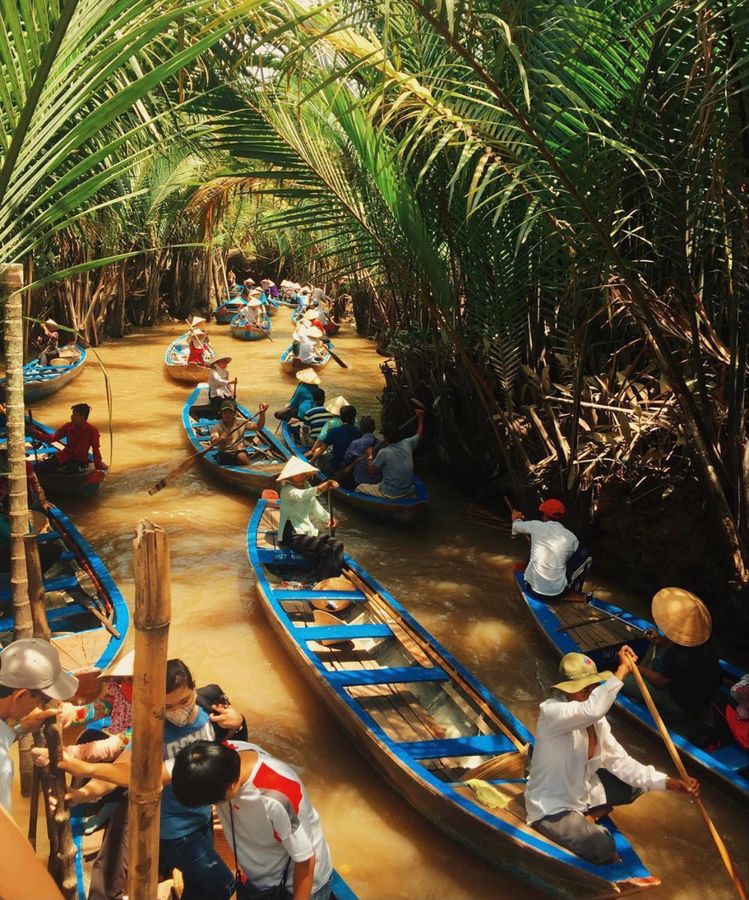
Kick off your Mekong Delta adventure by heading to My Tho, the closest major city from Ho Chi Minh City. Grab a bus or a private car – it’s the best way to get there efficiently. Once settled, hop on a traditional boat trip across the Mekong River to Ben Tre. This island province is famed for its coconut industry. You’ll visit a coconut
candy workshop, ride a horse-drawn cart through rural areas, and experience a sampan boat ride through narrow canals, a truly unique experience. Enjoy fresh local produce and honey tea.
Day 2: Can Tho – Floating Markets & Local Life
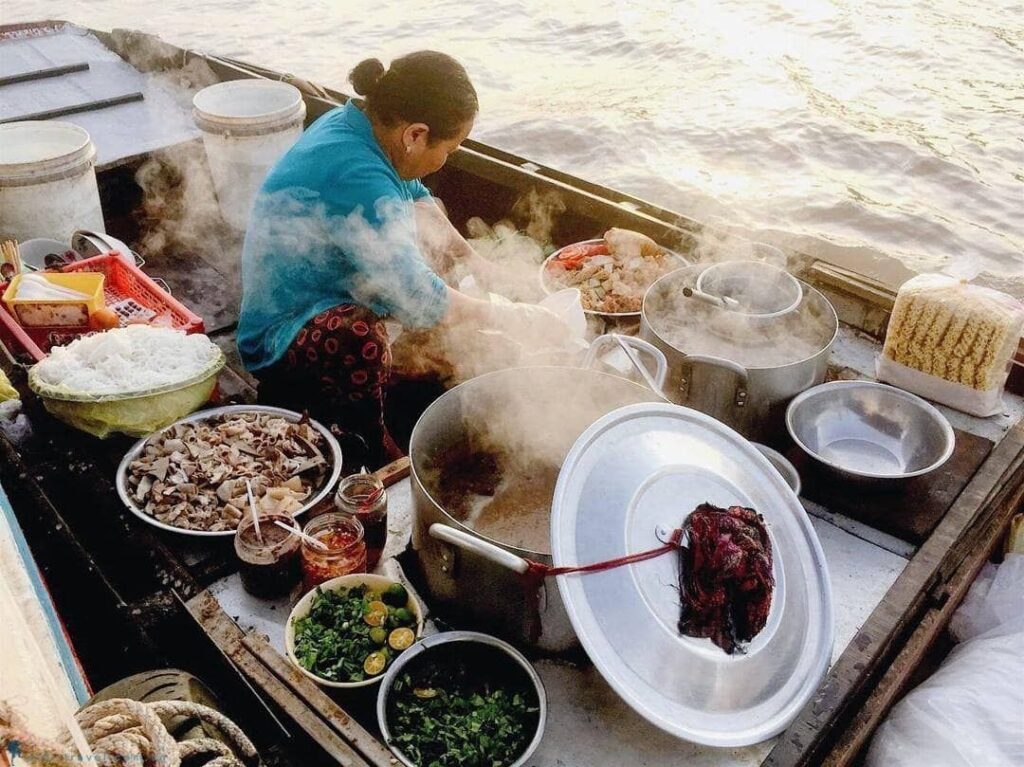
Today, journey further south to Can Tho, the largest city in the Mekong Delta. This is where the magic of the floating markets truly comes alive! Get up pre-dawn (yes, it’s worth it!) for a boat tour to Cai Rang Floating Market, one of the biggest and most vibrant. See merchants exchanging goods directly from their boats – it’s an incredible insight into the local markets and an authentic way of life. Spend the afternoon exploring Can Tho’s bustling city center, try some incredible street food, and wander along the Ninh Kieu Wharf.
Day 3: Chau Doc – The Gateway to Cambodia & Sam Mountain

Travel west to Chau Doc, a town with a unique blend of Vietnamese, Khmer, and Cham cultures. This is a great place to experience the diverse communities of the Mekong Delta. Take a boat ride to visit floating houses and a Cham village. In the afternoon, hike or take a motorbike up Sam Mountain for panoramic views of the rice paddies stretching all the way to the Cambodian border. The sunset from here is spectacular!
Day 4: Tra Su Cajuput Forest & Rural Immersion
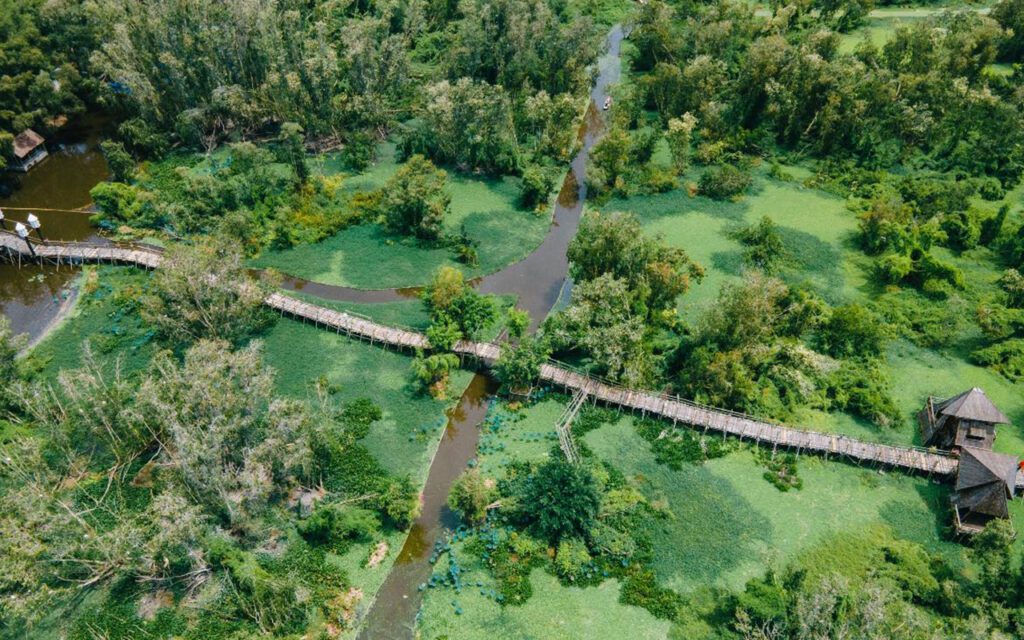
Near Chau Doc, discover the serene Tra Su Cajuput Forest, a sunken forest ecosystem. Take a small rowing boat deep into the forest, gliding through green waterways surrounded by lush vegetation and abundant birdlife. It’s a paradise for nature lovers and an incredibly peaceful unique experience. Spend the afternoon exploring more of the small villages and rice fields around Chau Doc, perhaps visiting a local farm or simply enjoying the tranquil beauty of the rural areas.
Day 5: Back to Ho Chi Minh City or Beyond
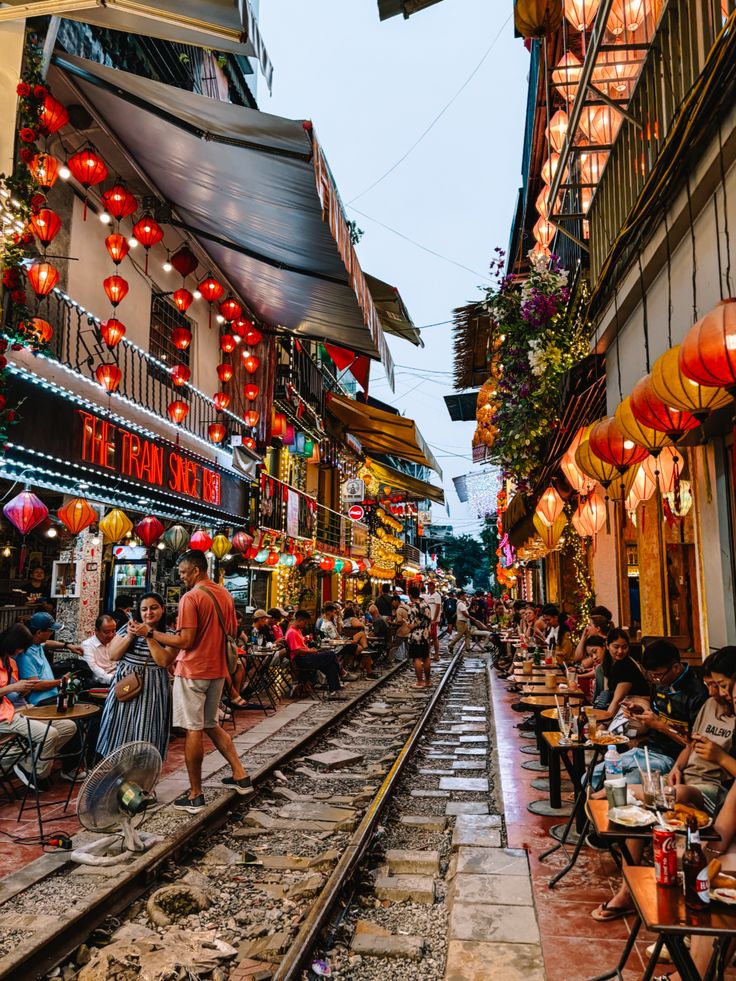
Enjoy a final Vietnamese coffee by the Mekong River. Depending on your next adventure, you can take a bus back to Ho Chi Minh City (about 6-7 hours from Chau Doc), or for the more adventurous, this is a prime spot to cross the border into Cambodia and continue your Southeast Asia exploration! Whichever you choose, you’ll leave the Mekong Delta with unforgettable experiences and a deeper appreciation for this incredible part of Vietnam.
5. Marvel at the Ancient Town of Hoi An
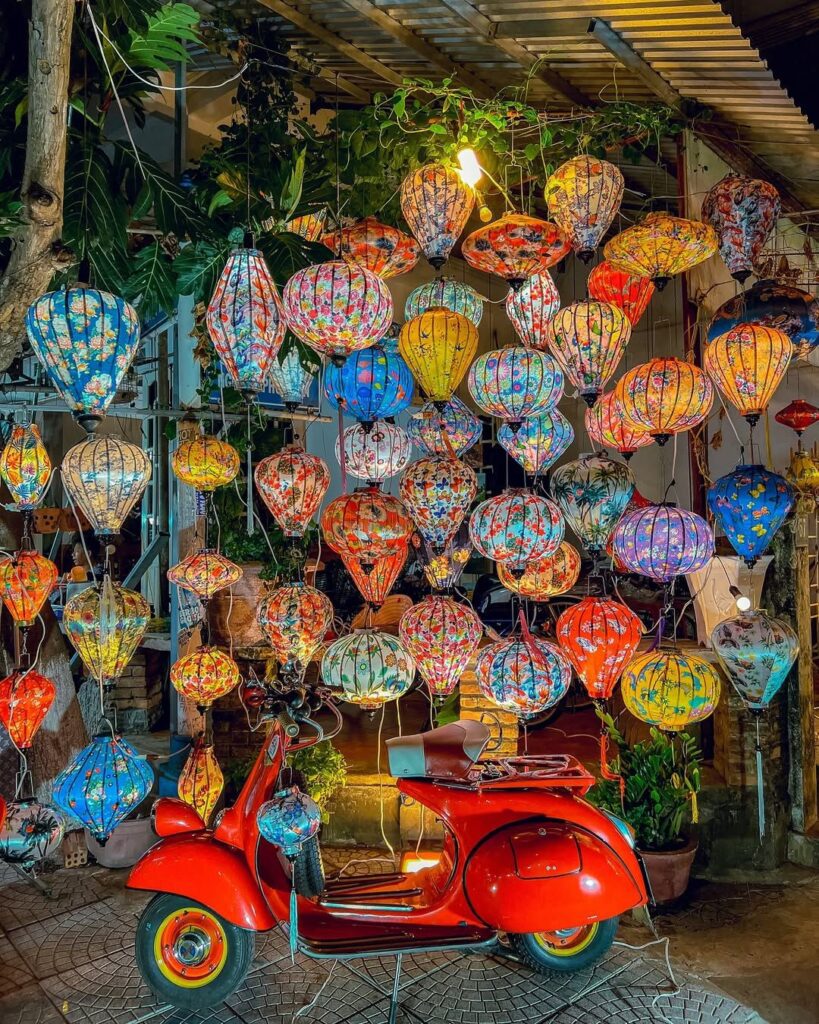
Now, let’s venture north into the heart of Central Vietnam. While Da Nang is a modern, bustling city with beautiful beaches, the real showstopper nearby is Hoi An. This ancient town is pure magic, especially at night when the lanterns glow. It’s a must-visit destination for anyone heading to Vietnam. I’ve lost count of the times I’ve wandered its old townalleys, admired the Japanese Covered Bridge, and had clothes tailor-made for a fraction of the price back home. It’s a photographer’s dream and a great place to simply slow down and enjoy the atmosphere. The local markets here are fantastic for souvenirs and sampling delicious Vietnamese cuisine. Hoi An is also a UNESCO World Heritage Site, and for good reason. Its charm is simply undeniable.
Check our full article about Hoi An
6. Step Back in Time at Hue’s Imperial City
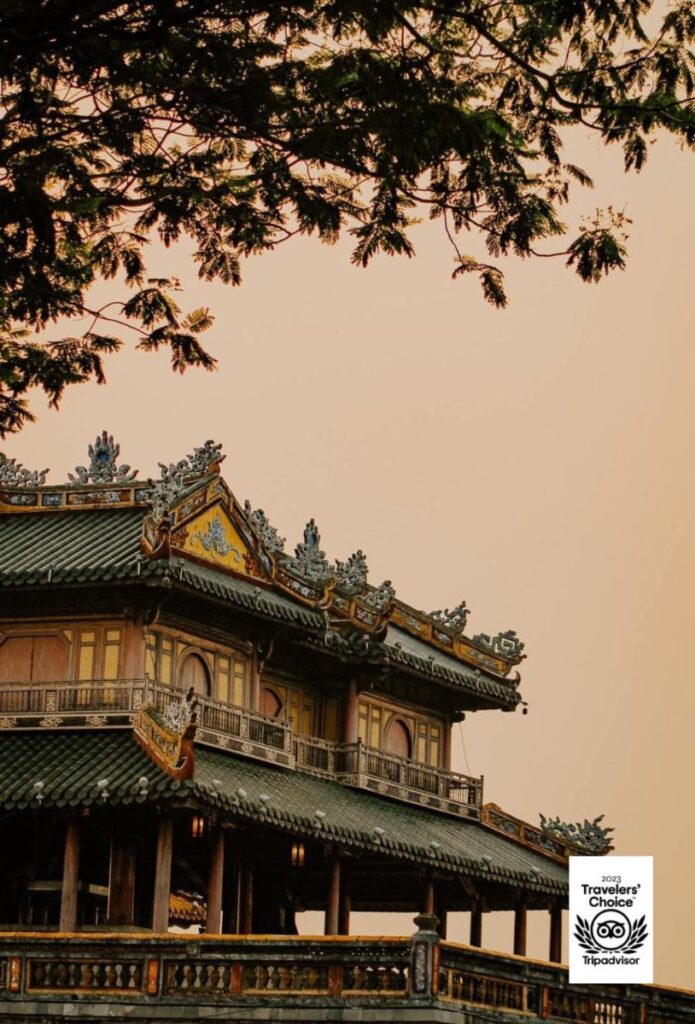
Further north in Central Vietnam lies Hue, the former imperial city. History enthusiasts, this one’s for you! The Imperial Citadel, a UNESCO World Heritage Site, is a sprawling complex of palaces, temples, and gardens that once housed the Nguyen Dynasty emperors. Exploring this ancient city gives you a profound sense of Vietnam’s rich past. The Perfume River adds to the serenity, and a boat ride down it is a lovely way to see the city. It’s one of the best places to immerse yourself in royal history and architecture.
Check our full article about Hue
7. Discover the Golden Bridge near Da Nang
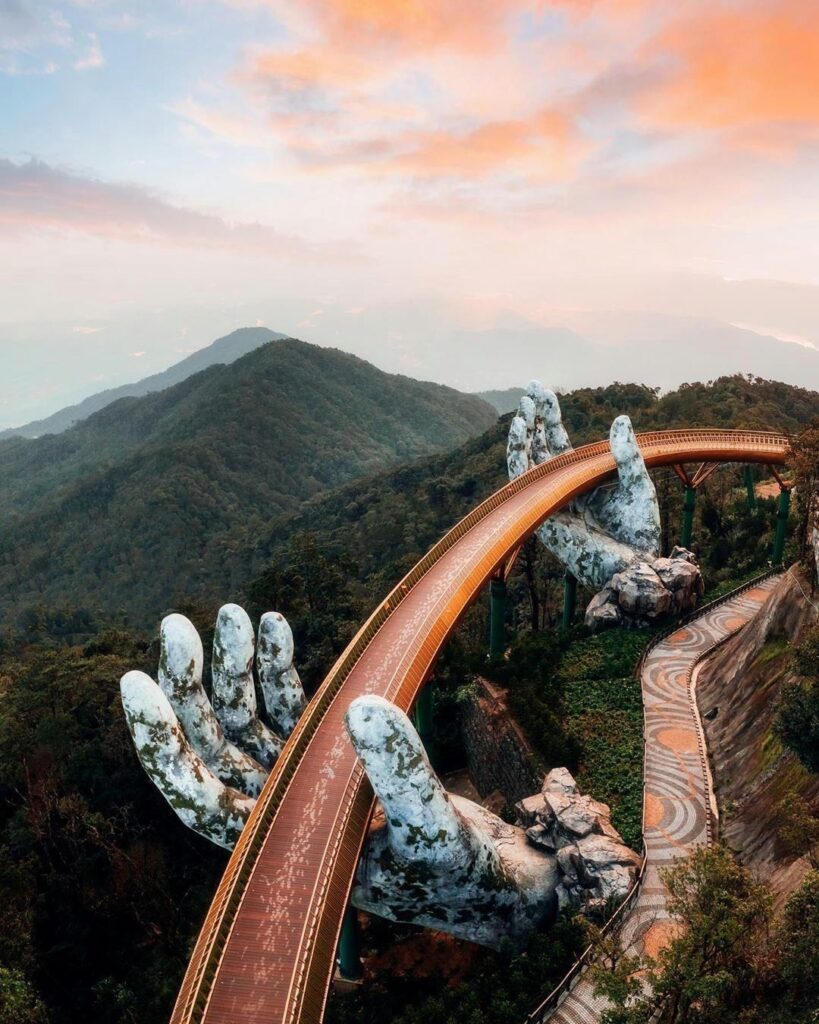
While in the Central Vietnam area, don’t miss the chance to visit the Golden Bridge near Da Nang. This architectural marvel, held up by two giant stone hands, offers incredible panoramic views of the surrounding mountains and coast. It’s become a popular tourist destination in recent years and provides fantastic photo opportunities. I remember my jaw dropping when I first saw it – it’s truly a sight to behold!
8. Cruise through the Enchanting Halong Bay
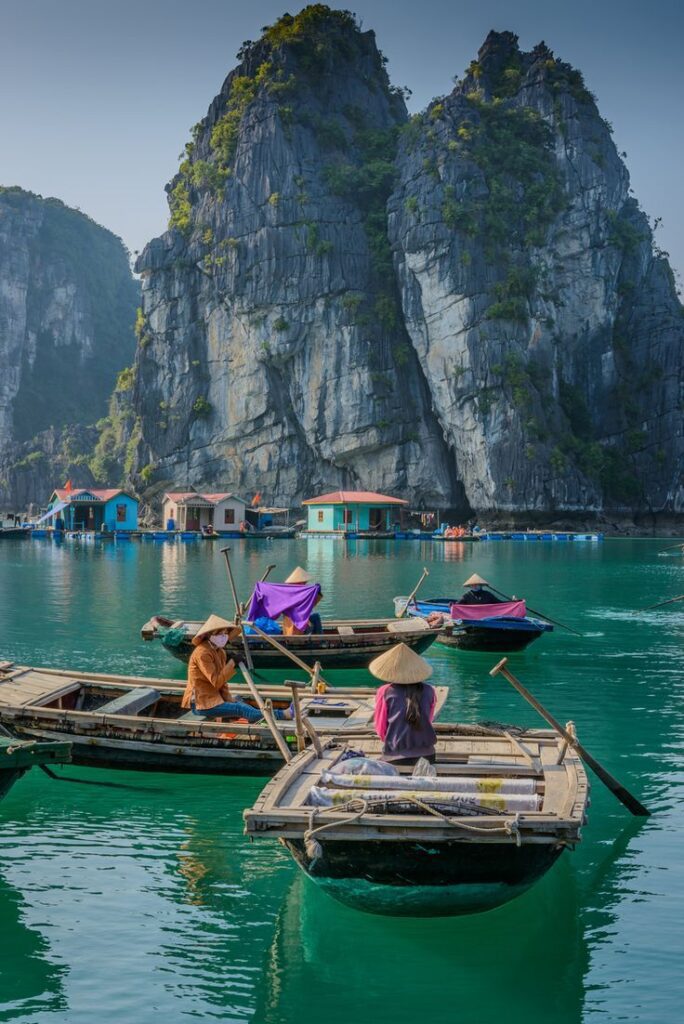
And then we reach Northern Vietnam, a region of breathtaking natural beauty and cultural richness. Of course, the jewel in its crown is Ha Long Bay, a UNESCO World Heritage Site that needs no introduction. Imagine thousands of limestone karsts jutting out of turquoise waters, creating an otherworldly landscape. A boat tour through Ha Long Bayis an absolute must-do. I’ve done several, each one more magical than the last. You can opt for a day trip or, for a truly immersive experience, an overnight cruise.
Exploring hidden coves, kayaking through grottoes, and waking up to the mist-shrouded karsts is an unforgettable experience. Many tours also visit Cat Ba Island, which offers fantastic hiking in Cat Ba National Park and even more stunning views. For a slightly less crowded but equally beautiful experience, consider a boat trip to Bai Tu Long Bay, right next to Ha Long Bay. It offers a similar mystical landscape with fewer crowds, giving you a more serene experience. It’s truly one of the natural wonders of the world.
Check our full article about Halong Bay
9. Immerse Yourself in Ninh Binh’s “Ha Long Bay on Land”
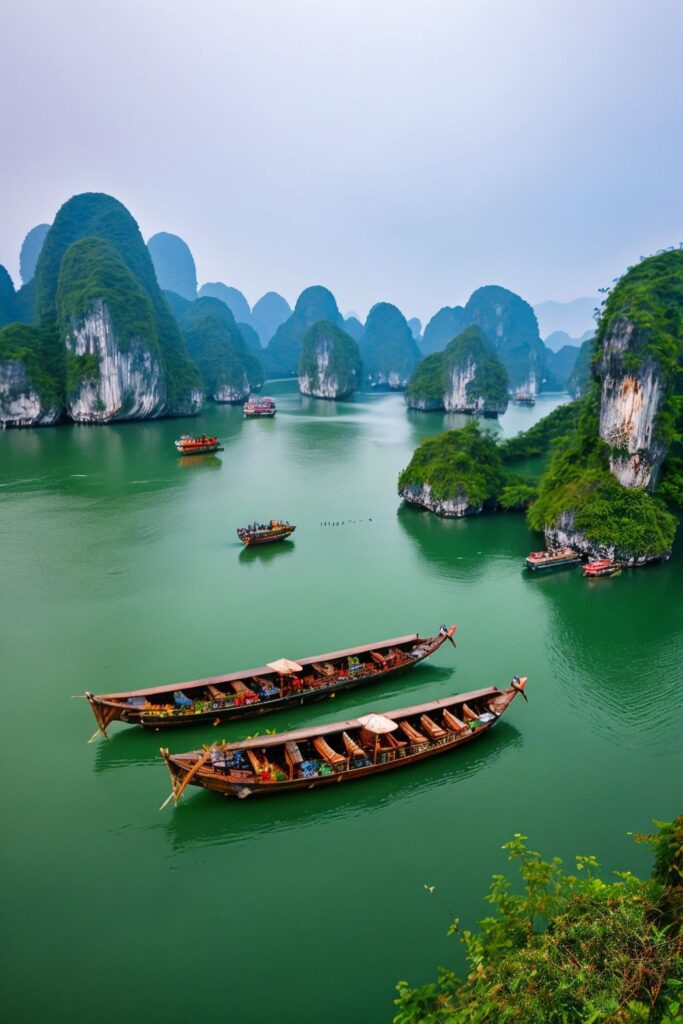
Beyond Ha Long Bay, Northern Vietnam offers so much more for nature lovers. Ninh Binh, often called “Ha Long Bay on land,” is another absolute stunner. Think towering limestone karsts surrounded by emerald rice paddies and tranquil rivers. A boat ride through Tam Coc or Trang An is truly magical, taking you through caves and past stunning scenery. It’s a great place for cycling through the rice fields and immersing yourself in the peaceful rural areas. I loved renting a bicycle and just getting lost among the green, waving at the friendly locals in the small villages. The serenity here is unmatched.
10. Trek Through the Rice Terraces of Sapa
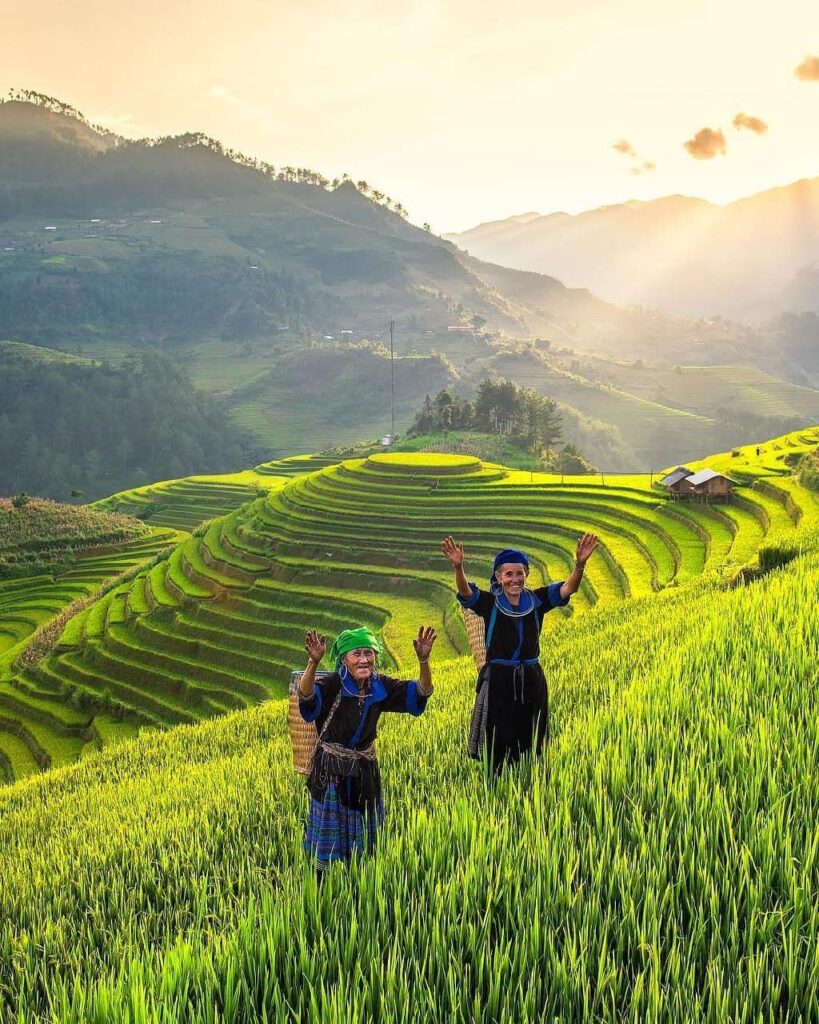
For those seeking an even more off-the-beaten-path adventure, head further north to the mountainous regions, like
Sapa, near the Chinese border. This area is famous for its cascading rice terraces and the vibrant cultures of the hill tribes. Trekking through these rice terraces and visiting local communities gives you a profound insight into a different way of life. I’ve spent days hiking here, meeting friendly locals, and learning about their traditions. It’s a truly authentic and humbling experience. Be sure to engage with a local guide to learn about the fascinating local culture.
How to get to Sapa from Hanoi ?
The most popular and often the best way for budget-conscious adventurers is the sleeper bus. These are super comfortable, with reclining beds, and typically take 5.5 to 7 hours. You can grab an overnight bus, wake up in Sapa, and save on a hotel night – very clever! Prices range from $12-$25 USD.
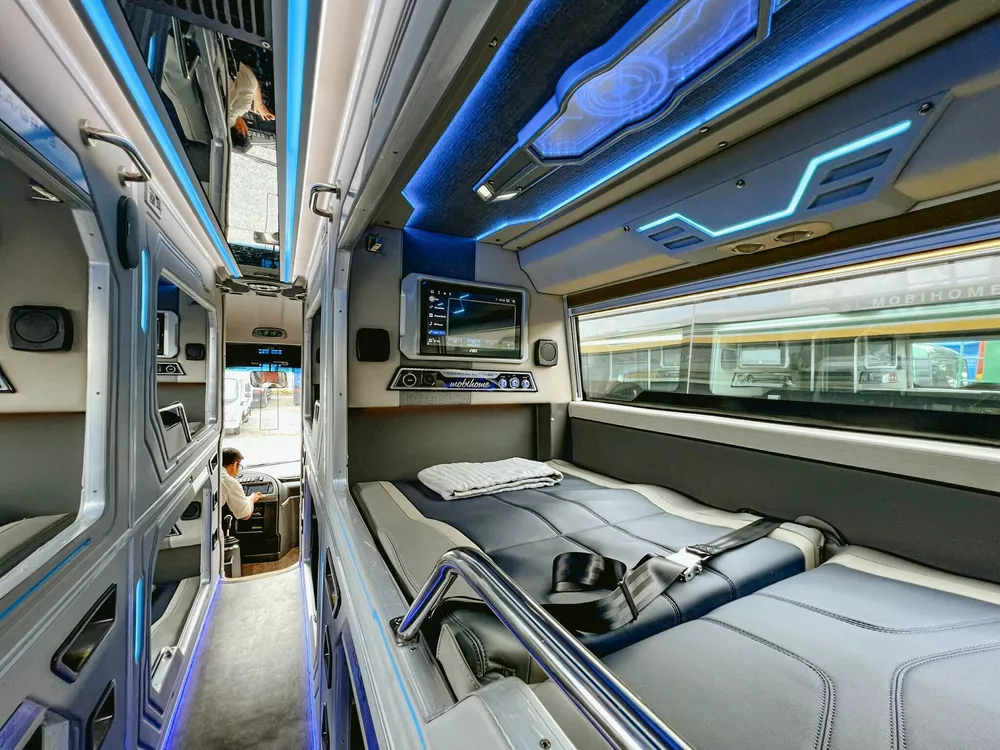
If you prefer a classic travel vibe, the overnight train is charming. It takes about 8-9 hours to Lao Cai station, then you’ll need another hour by local bus or taxi to Sapa itself. Expect to pay $25-$75 USD.
For more comfort and speed, a limousine van (9-11 seater) is fantastic. Using the expressway, they get you there in 5-6 hours, costing around $18-$30 USD.
Whichever you choose, book in advance! Get ready for some truly unforgettable experiences among the hill tribes and stunning natural beauty of Sapa. Alright, funky fresh travelers, Eric here! So you’re looking to swap Hanoi’s city buzz for Sapa’s stunning rice terraces and misty mountains? Smart move! Getting from Hanoi to this Northern Vietnam gem is a straightforward journey with a few best ways to travel.
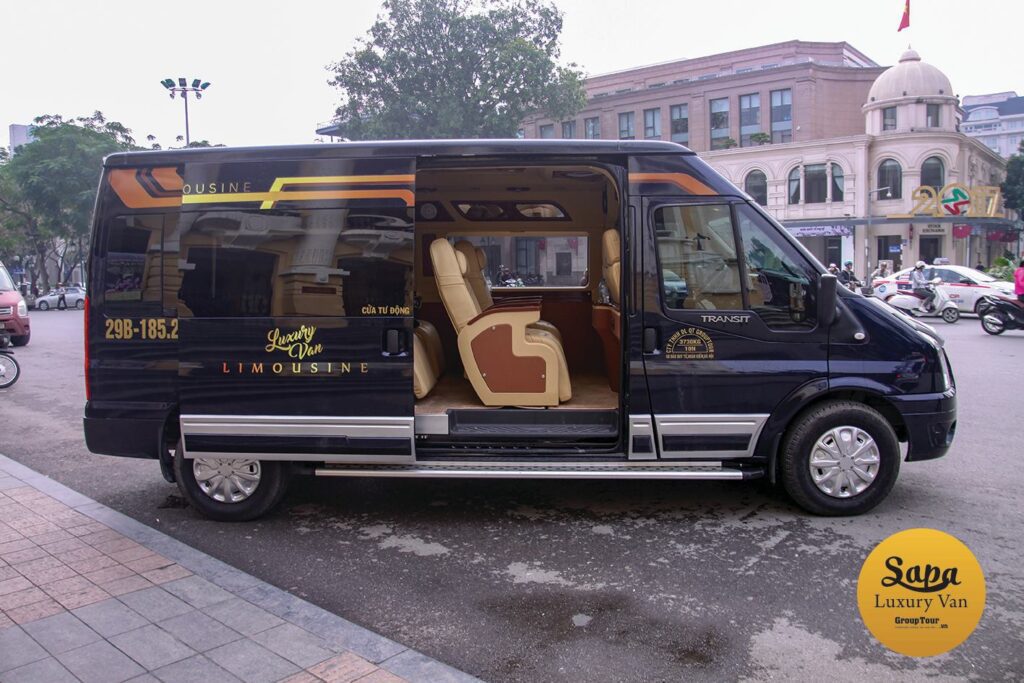
The most popular option, and one I highly recommend, is the sleeper bus. These are surprisingly comfortable, often with individual bunks, and they save you a night of accommodation. The journey takes about 5.5 to 7 hours and costs around $12-$25 USD. You’ll depart from Hanoi’s Old Quarter and arrive directly in Sapa town, often early in the morning, perfect for starting your adventures with the hill tribes.
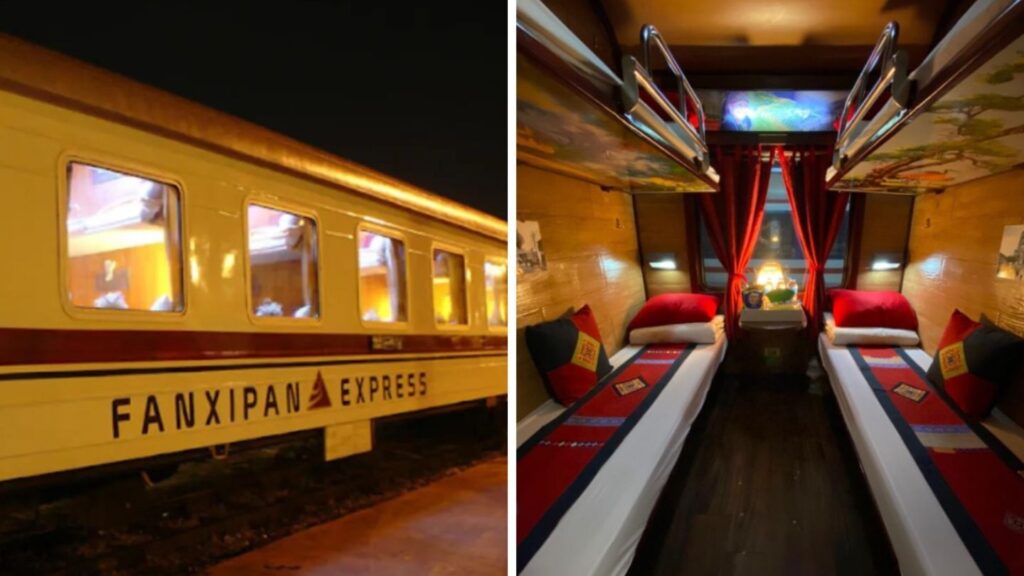
Alternatively, the overnight train to Lao Cai (the station closest to Sapa) is a classic choice. This takes about 8-9 hours, plus an additional 50-90 minutes by local bus or taxi from Lao Cai to Sapa. Train tickets range from $25-$75 USD, offering different classes from standard berths to VIP cabins. While scenic, remember that extra transfer!
For a more comfortable and slightly faster ride, consider a limousine van. These 9-11 seater vans offer spacious, reclining seats and often use the expressway, cutting travel time to 5-6 hours. They typically cost $18-$30 USD and often include hotel pick-up.
11. Chase Waterfalls at Ban Gioc
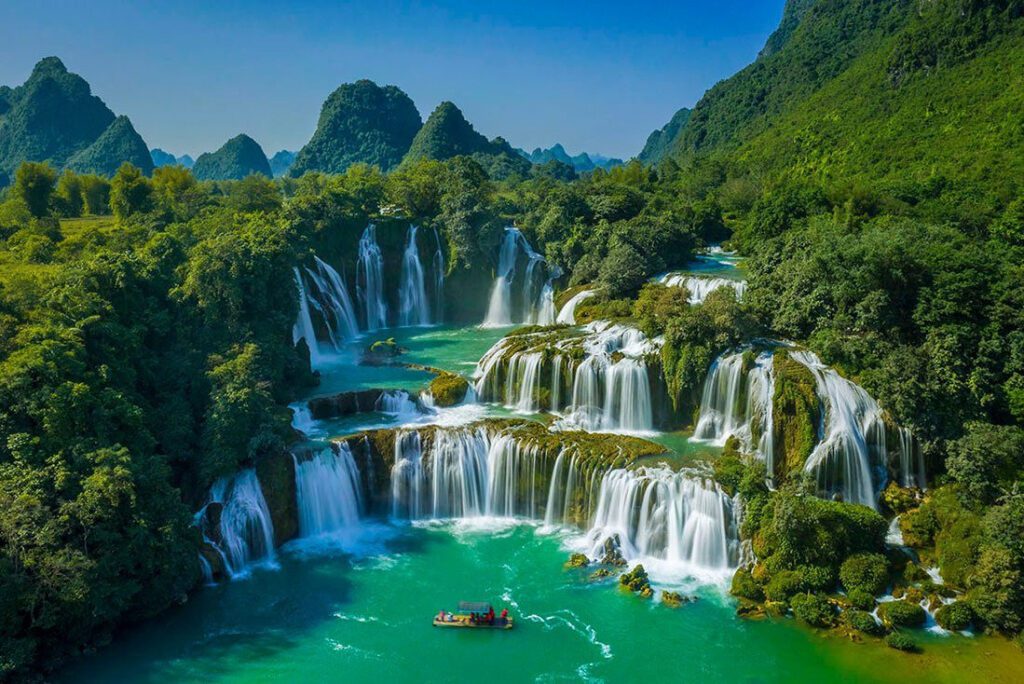
Another hidden gem in the northern region, not far from the Chinese border, is Ban Gioc Waterfall. This magnificent waterfall straddling the border with China is a sight to behold. It’s a bit of a journey to get there, but totally worth it for its sheer scale and beauty. The powerful roar of the water and the lush surroundings make for an incredible natural spectacle, definitely one of the top natural wonders in Vietnam.
12. Unwind on the Beaches of Phu Quoc Island
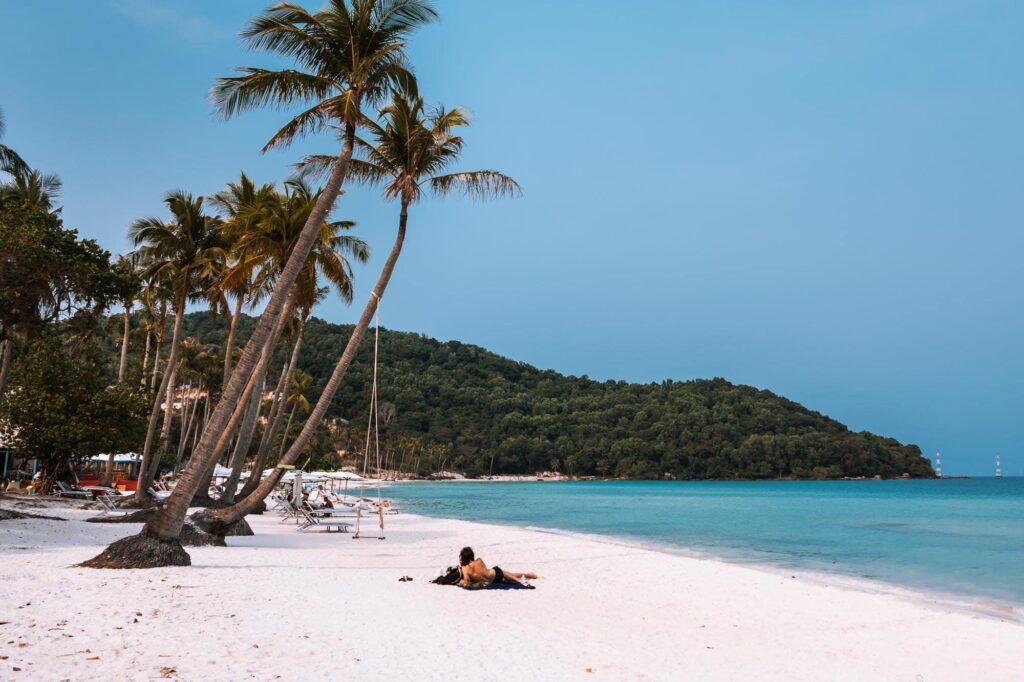
Let’s not forget the incredible relaxation opportunities! Phu Quoc Island in southern Vietnam is a tropical paradise with white sandy beaches and crystal-clear turquoise waters. It’s become a popular tourist destination in recent years, and for good reason. You can snorkel or dive among vibrant coral reefs, explore the island’s interior, or simply relax on the beach. It’s the perfect spot to unwind after all your adventures and soak up some sun by the South China Sea.
Check our full article about Phu Quoc
13. Explore the Caves of Phong Nha-Ke Bang National Park
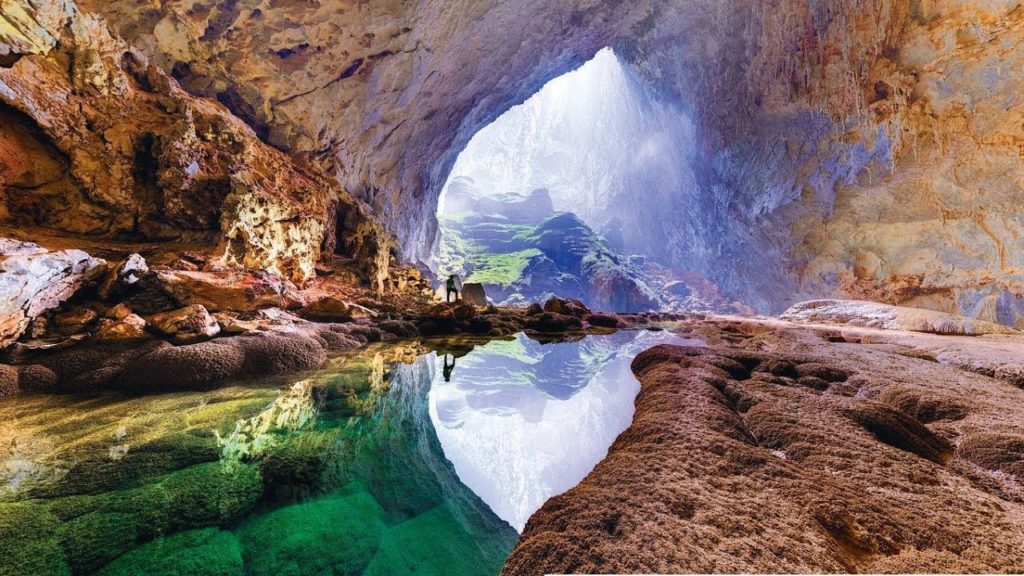
For the ultimate adventure seekers and nature lovers, make a detour to Phong Nha-Ke Bang National Park in Central Vietnam. This incredible park is home to some of the world’s biggest caves, including Phong Nha Cave and the legendary Son Doong, the world’s largest cave. I haven’t made it into Son Doong myself (it requires serious planning and a hefty price tag!), but even exploring Phong Nha Cave by boat tour is an unforgettable experience. The sheer scale of these natural wonders will blow your mind and is a truly unique experience.
14. Indulge in Vietnam’s Legendary Street Food Scene
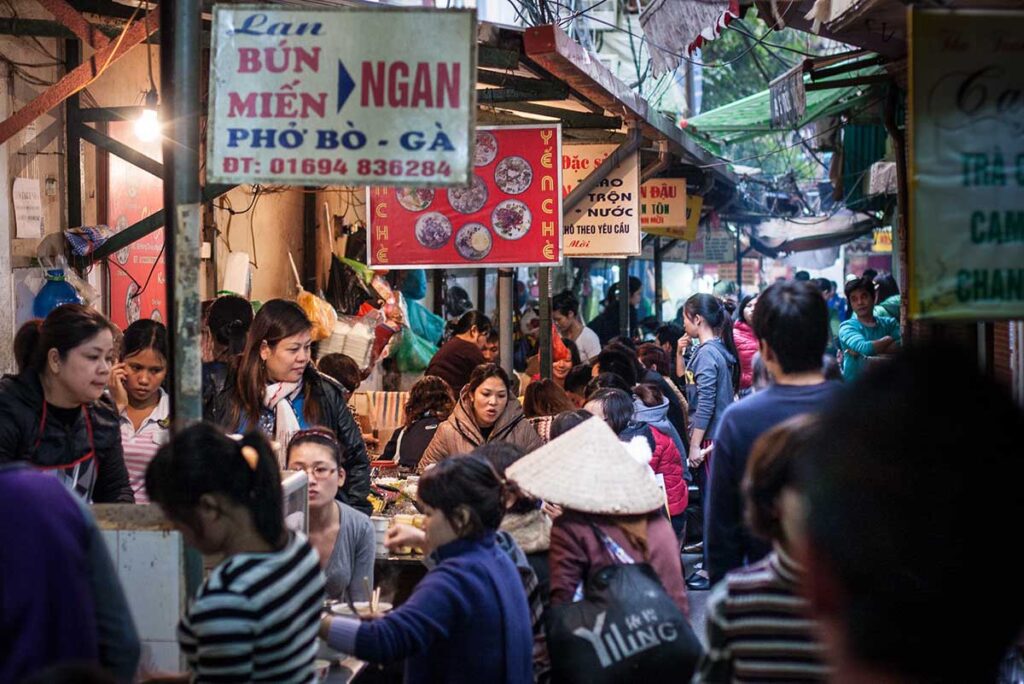
Okay, this isn’t a single place, but it’s one of the best things about Vietnam, and something you experience everywhere! From the fresh spring rolls and flavorful pho (my absolute favorite things to eat!) you find on every street corner to the crispy banh mi sandwiches, local cuisine is a highlight of any Vietnam trip. Don’t be afraid to try street food – it’s often the best way to experience authentic flavors and interact with locals. I’ve had some of my most memorable meals sitting on tiny plastic stools on the pavement, surrounded by the buzz of local life. From the seafood delights of Nha Trang to the diverse offerings of local markets everywhere, your taste buds are in for a treat. This is where the true heart of Vietnamese food lies.
Best food in Vietnam
What makes Vietnamese food so special? It’s all about balance – sweet, sour, salty, bitter, and spicy, often all in one bite. Plus, the emphasis on super fresh local produce and an abundance of fragrant herbs is unmatched. Forget the fancy dining rooms for a minute; the best way to really dive in is to grab a tiny plastic stool, join the locals, and let the flavors wash over you.
Here are some absolute must-try dishes that define the local cuisine of Vietnam:
1. Pho (Noodle Soup):
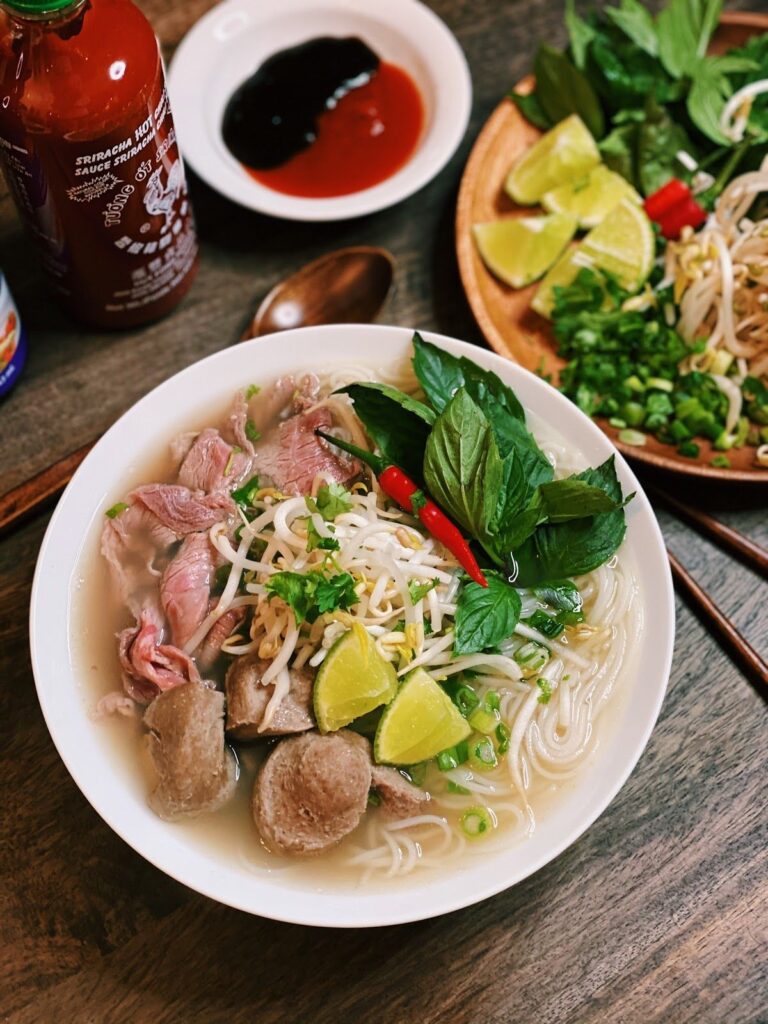
Let’s start with the undisputed king! Pho is everywhere, and for good reason. This aromatic noodle soup, usually with beef (pho bo) or chicken (pho ga), boasts a rich, complex broth simmered for hours with star anise, cinnamon, and ginger. Northern-style pho (like in Hanoi) often has a clearer broth, while southern pho (like in Ho Chi Minh City) might be richer and served with a bigger platter of fresh herbs, bean sprouts, and various condiments to customize your bowl. It’s the ultimate comfort food, perfect for breakfast, lunch, or a late-night craving.
2. Banh Mi (Vietnamese Sandwich)

Oh, banh mi, how I love thee! This delicious legacy of French colonial influence is a crispy baguette packed with a delightful explosion of flavors. Think savory meats (often pork belly, grilled pork, or pate), pickled daikon and carrot, fresh cilantro, cucumber, and a touch of chili. Every bite offers a perfect crunch, tang, and savory satisfaction. You’ll find variations across the country, each a unique experience. It’s the ultimate on-the-go meal and a truly unforgettable experience.
3. Bun Cha (Grilled Pork with Vermicelli)
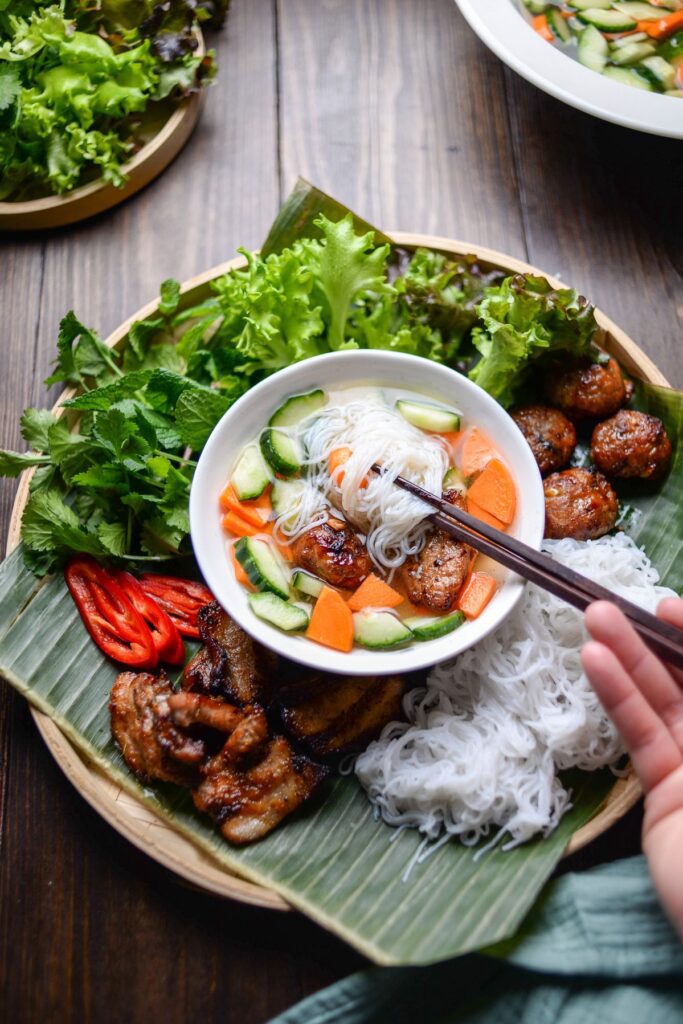
A Hanoi specialty that shot to global fame thanks to a certain former US President. Bun Cha is grilled pork patties and slices of marinated pork belly served with a bowl of sweet and savory dipping sauce (nuoc cham), a mound of fresh vermicelli noodles, and a mountain of fresh herbs. You dip the noodles and meat into the sauce – it’s light, fresh, and incredibly addictive. I could eat this every day!
4. Goi Cuon (Fresh Spring Rolls)
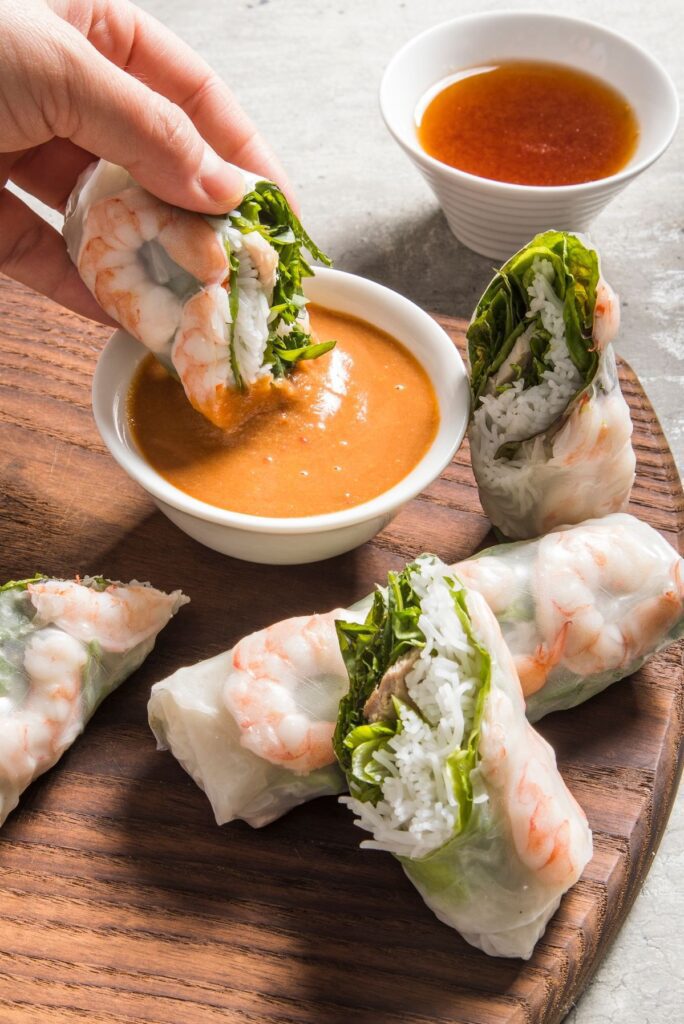
Forget the fried stuff for a moment! Goi Cuon are fresh, translucent rice paper rolls packed with shrimp, pork, vermicelli noodles, and an abundance of fresh herbs like mint and basil. They’re light, healthy, and usually served with a rich peanut dipping sauce or a tangy nuoc cham. Perfect as an appetizer or a light meal, especially when it’s hot.
5. Banh Xeo (Sizzling Pancake)
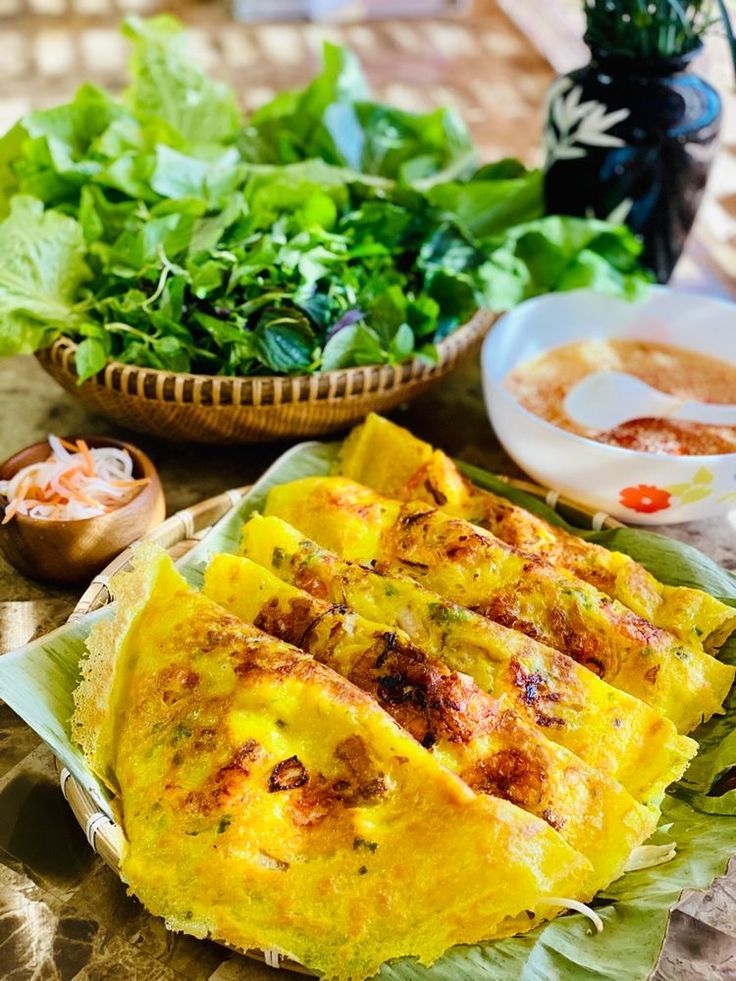
Hailing from Central Vietnam (though found everywhere), Banh Xeo is a savory, crispy pancake made from rice flour, turmeric, and coconut milk, filled with shrimp, pork, and bean sprouts. The “xeo” (sizzle) sound it makes when cooked is where it gets its name! You break off pieces, wrap them in lettuce leaves with other fresh herbs, and dip them in nuoc cham. It’s a fun, interactive, and incredibly flavorful dish.
6. Bun Bo Hue (Hue-Style Beef Noodle Soup)
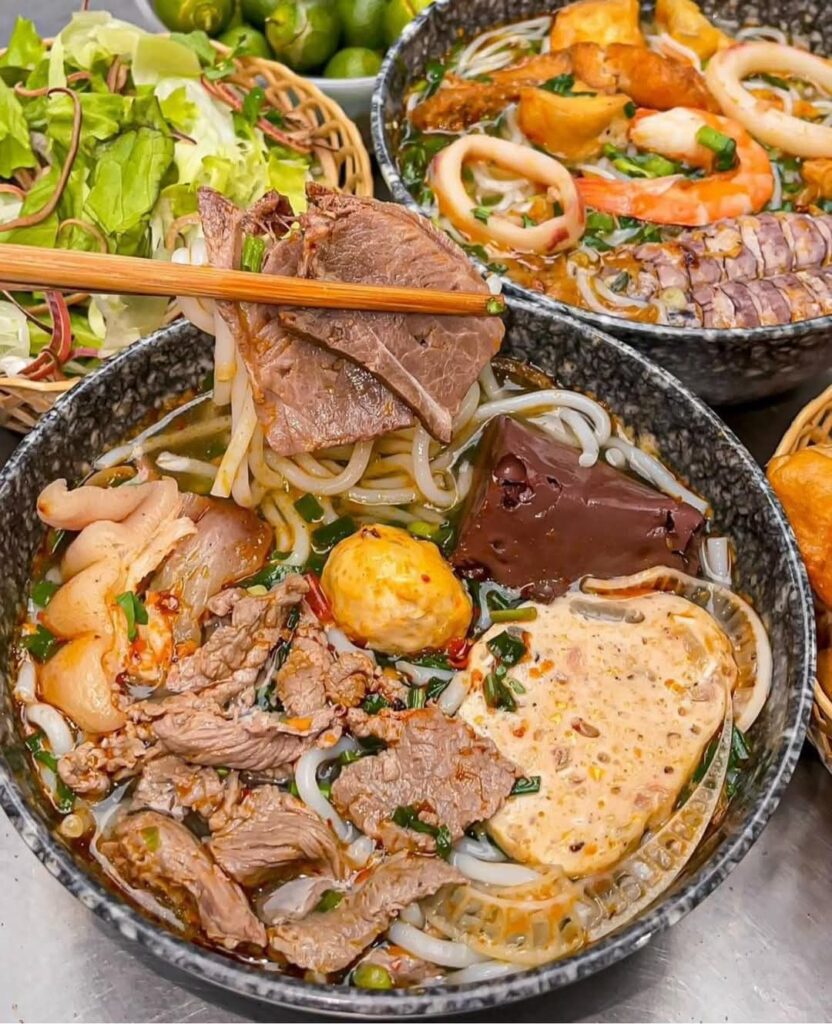
From the imperial city of Hue, this is pho’s bolder, spicier cousin. Bun Bo Hue features thick rice noodles, tender slices of beef, often pork hock, and even cubes of congealed pig’s blood (don’t knock it ’til you try it!). The broth is intensely flavorful, spicy, and fragrant with lemongrass and shrimp paste. It’s a fiery kick that truly represents the robust flavors of Central Vietnam.
7. Cao Lau (Hoi An Noodles)
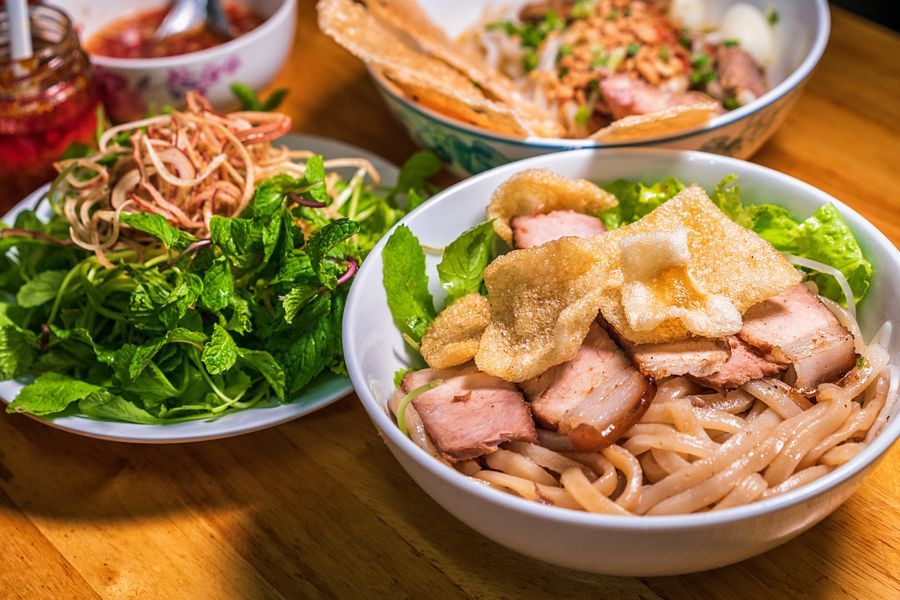
If you’re in Hoi An, you must try Cao Lau. This unique noodle dish is said to be made with water from a specific well in Hoi An, giving the thick, chewy noodles their distinct texture. It’s served with slices of seasoned pork, fresh greens, crispy croutons, and just a small amount of savory broth. It’s a dish that truly defines the ancient town‘s culinary identity.
8. Ca Phe Sua Da (Iced Coffee with Condensed Milk)
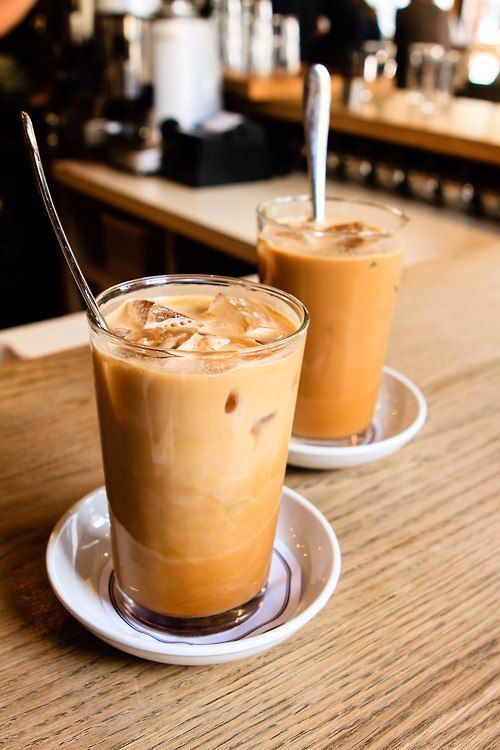
Okay, not a food, but this deserves a spot on any “best of” list! Vietnam’s coffee culture is legendary. Strong, dark-roasted coffee slowly drips through a filter into a glass with sweet condensed milk, then poured over ice. It’s a rich, creamy, and incredibly refreshing pick-me-up, perfect for surviving the heat of Southeast Asia. You’ll find it on every street corner.
The street food scene in places like Ho Chi Minh City‘s District 1, or Hanoi’s Old Quarter, is an adventure in itself.Don’t shy away from the stalls – they often serve the most authentic and delicious dishes. Whether you’re exploring the Mekong Delta or the vibrant major cities, the food is an integral part of the Vietnamese culture. Get ready to eat your heart out!
15. Experience the Nightlife and Live Music in Major Cities
Finally, after a day of exploring, why not soak in the vibrant atmosphere of Vietnam’s major cities? Ho Chi Minh City and Hanoi both offer incredible nightlife. You can find everything from rooftop bars with stunning views to bustling night markets. I love finding a spot with live music, grabbing a cold Vietnamese beer, and just watching the world go by. It’s a fantastic way to experience the energy of the country after dark and see a different side of Vietnamese urban life.
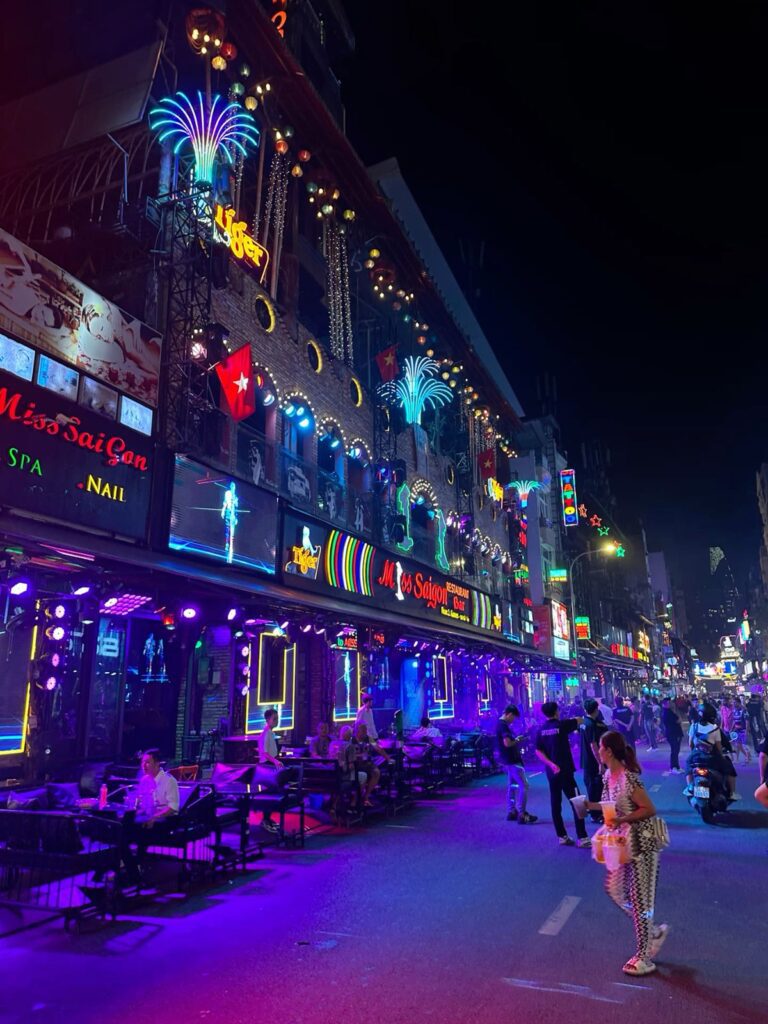
So, whether you’re a history buff, a nature enthusiast, a food lover, or just someone looking for an incredible adventure, Vietnam has something for everyone. From the bustling Ho Chi Minh City to the serene beauty of Ha Long Bay, the rich history of Hue to the vibrant markets of Hoi An, and the authentic experiences in the Mekong Delta and the northern rice terraces, this country offers unforgettable experiences at every turn. The best time to visit really depends on where you’re going, as the weather varies greatly between Northern Vietnam, Central Vietnam, and Southern Vietnam. Generally, the dry season (October to April) is a good reason for most of the country, but even the rainy season has its charms, with lush greenery and fewer tourists.
The main attractions are well-known, but I always encourage you to explore beyond them. Visit the local villages, strike up conversations with the friendly locals, try every weird and wonderful dish you see, and soak in the local culture. Explore the sand dunes near Mui Ne for a truly unique landscape. You can spend days on beautiful beaches like those in Nha Trang or Phu Quoc Island, diving into coral reefs in the South China Sea. Catch a live music performance in a local bar. Buy fresh local produce from a market. Vietnam is not just a collection of historical sites and natural wonders; it’s a feeling, a vibrant tapestry of sights, sounds, and smells that will stay with you long after you’ve left. So pack your bags, embrace the adventure, and get ready for the funky fresh trip of a lifetime to Vietnam! You won’t regret it.
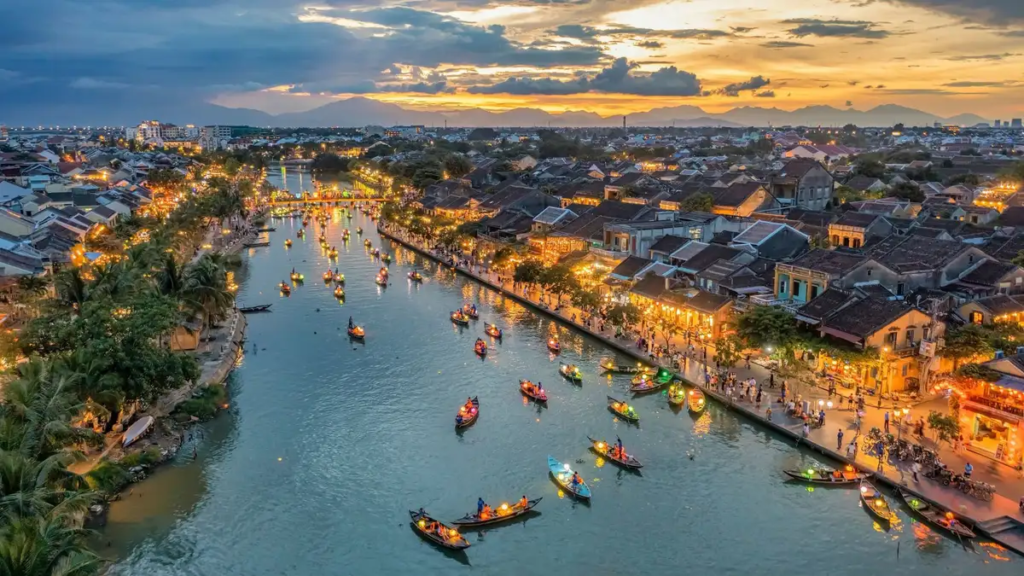
WHO AM I ?
Hello !
I am Eric, a French Australian citizen based between Australia, Asia and Bali and I love to travel and experience the world. I generally like outdoor activities, wellness, great food and venues , party and real local adventures ! I am a Yoga practitioner and fitness lover
I created this blog because I love to travel and I want to share my experiences with others. I’ve been traveling since I was a child, and I’ve been to over 50 countries. I’ve seen some amazing things and met some amazing people, and I want to help others experience the same things.

I believe that travel is one of the best ways to learn about the world and about yourself. When you travel, you’re forced to step outside of your comfort zone and experience new things. You learn about different cultures, different religions, and different ways of life. You also learn about yourself, your strengths, and your weaknesses.
Travel can also be a great way to make new friends. When you’re traveling, you’re surrounded by people from all over the world, and you’re all in the same boat. You’re all there to explore and experience new things, and that can create a bond between people.
Let’s connect together !
I hope that my travel blog will inspire others to travel and to see the world. I also hope that it will help people to learn about different cultures and to become more open-minded.
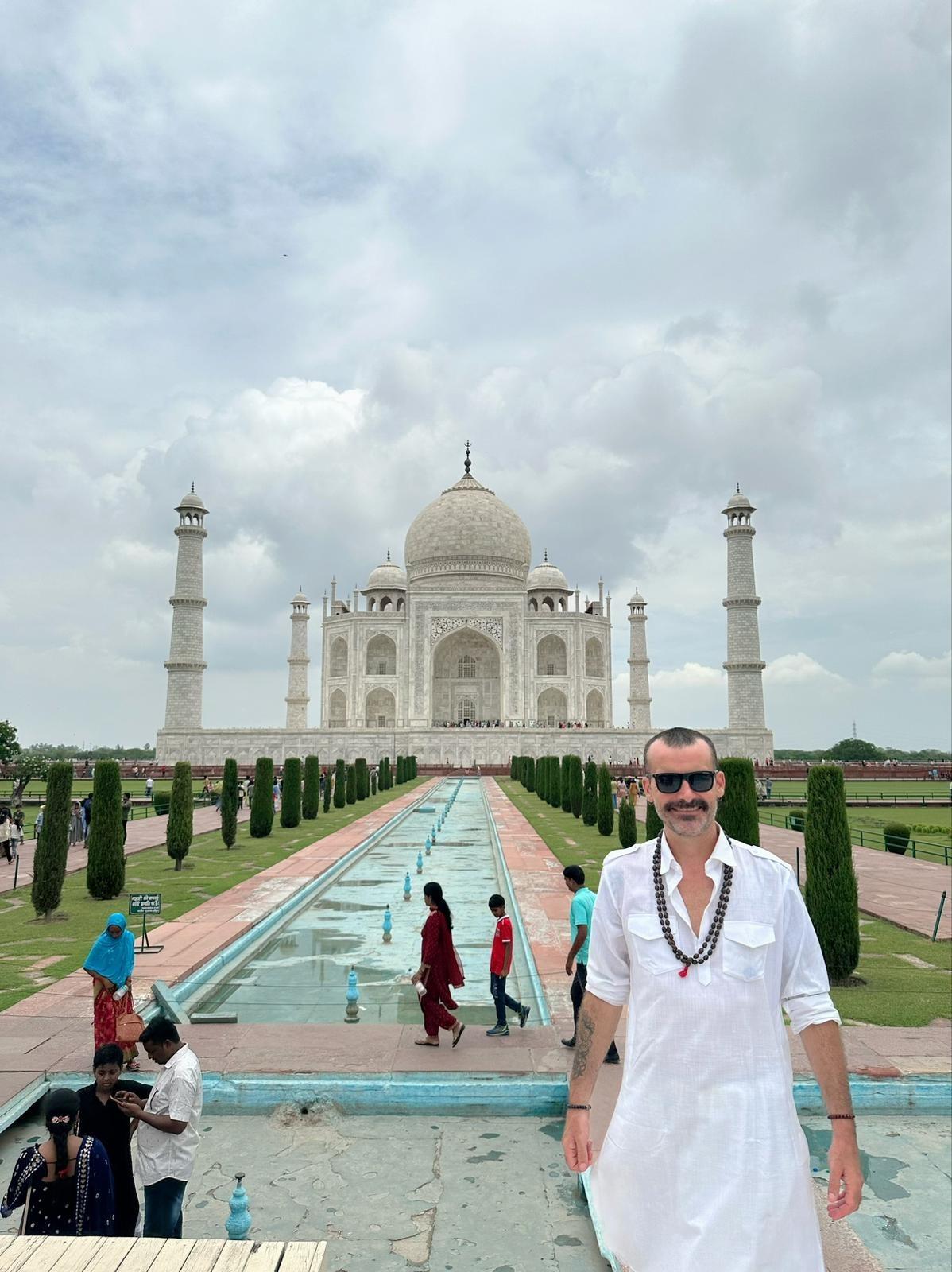

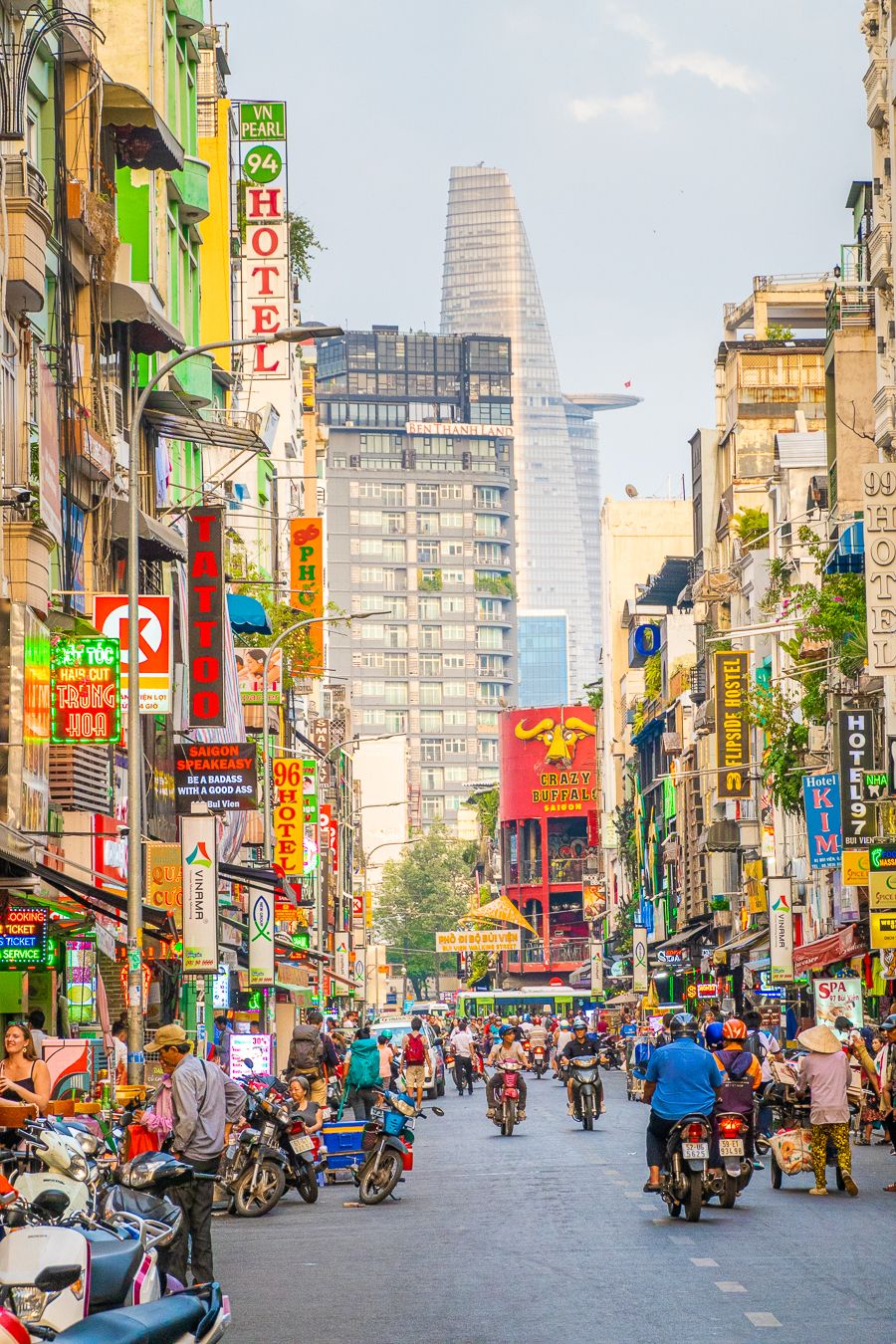
![Most beautiful places in Myanmar [ Best pictures 2025 ]](https://funkyfreshtravels.com/wp-content/uploads/2025/05/a30b9a8b6d783fdea59bae129b6fd2e5-768x605.jpg)

